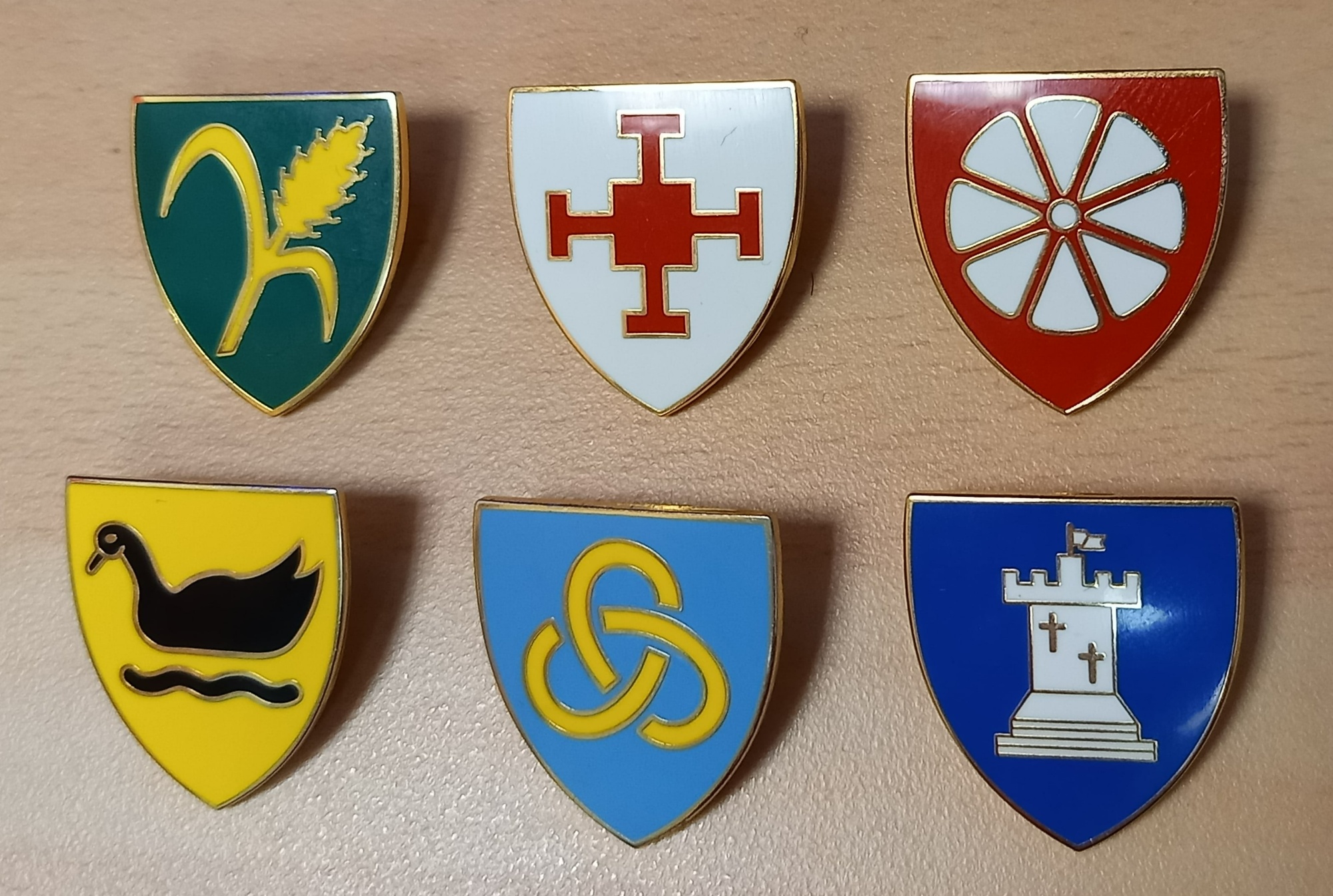Houses
Our school House system is weaved through all aspects of school life, and is just one example of the way in which we both support students pastorally and also develop student leadership.
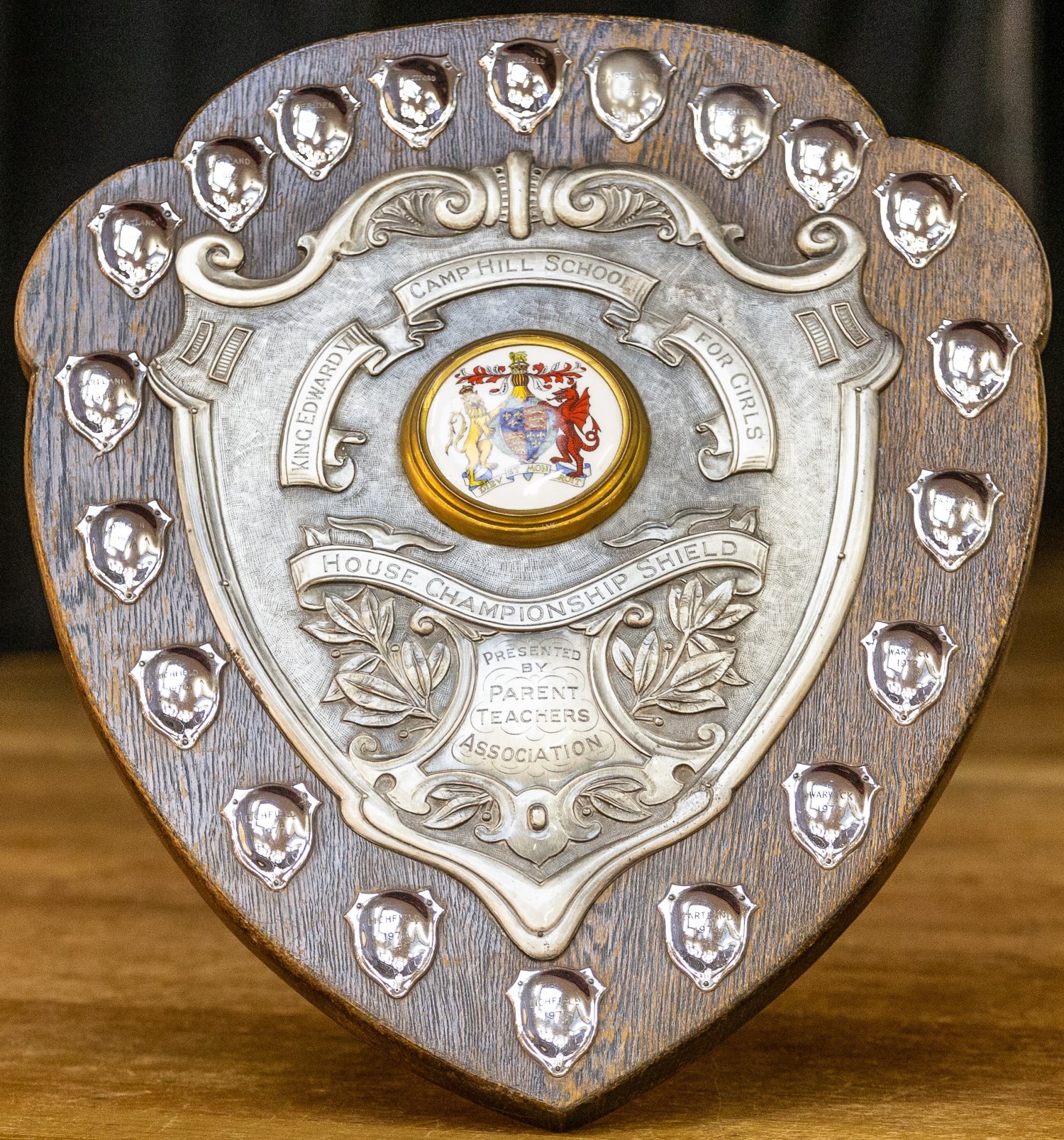
Every student and member of staff is placed into one of six Houses when they join the school.
Throughout the year there are many opportunities to earn House Points, from hard work and good behaviour through to House Festival and Sports Day. At the end of the school year the House with the most points is awarded the House Championship Shield (left).
The current House Point totals can be found on the Home page.
The six Houses are named after the various places where the school has been situated during its existence and the House emblems are associated with those places.
Cartland
"Cartland" is associated with our present site, which was for many years the home of the Cartland family who owned the whole estate occupied by the two Camp Hill Schools.
Cartland has an emblem copied from a detail on the Cartland family's coat of arms. It is a golden ear of corn on a green ground; an appropriate emblem as, for some centuries, the grounds around our school were farmland and might well have included some cornfields.
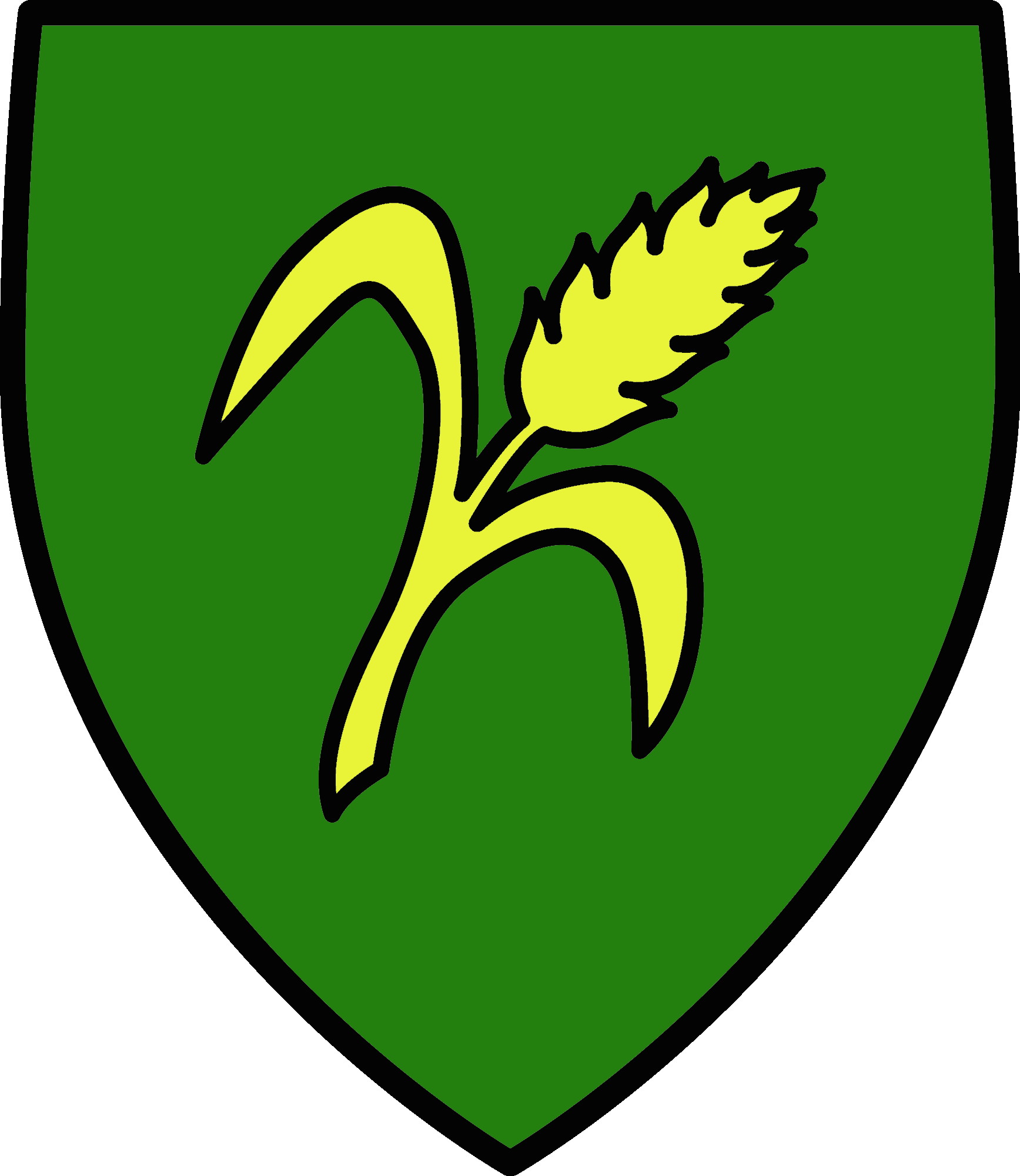
Lichfield
"Lichfield" is named because the school was evacuated to Lichfield from 1940 until 1943.
The emblem of Lichfield is a scarlet cross of Saint Chad, the patron saint of Lichfield, on a grey ground.
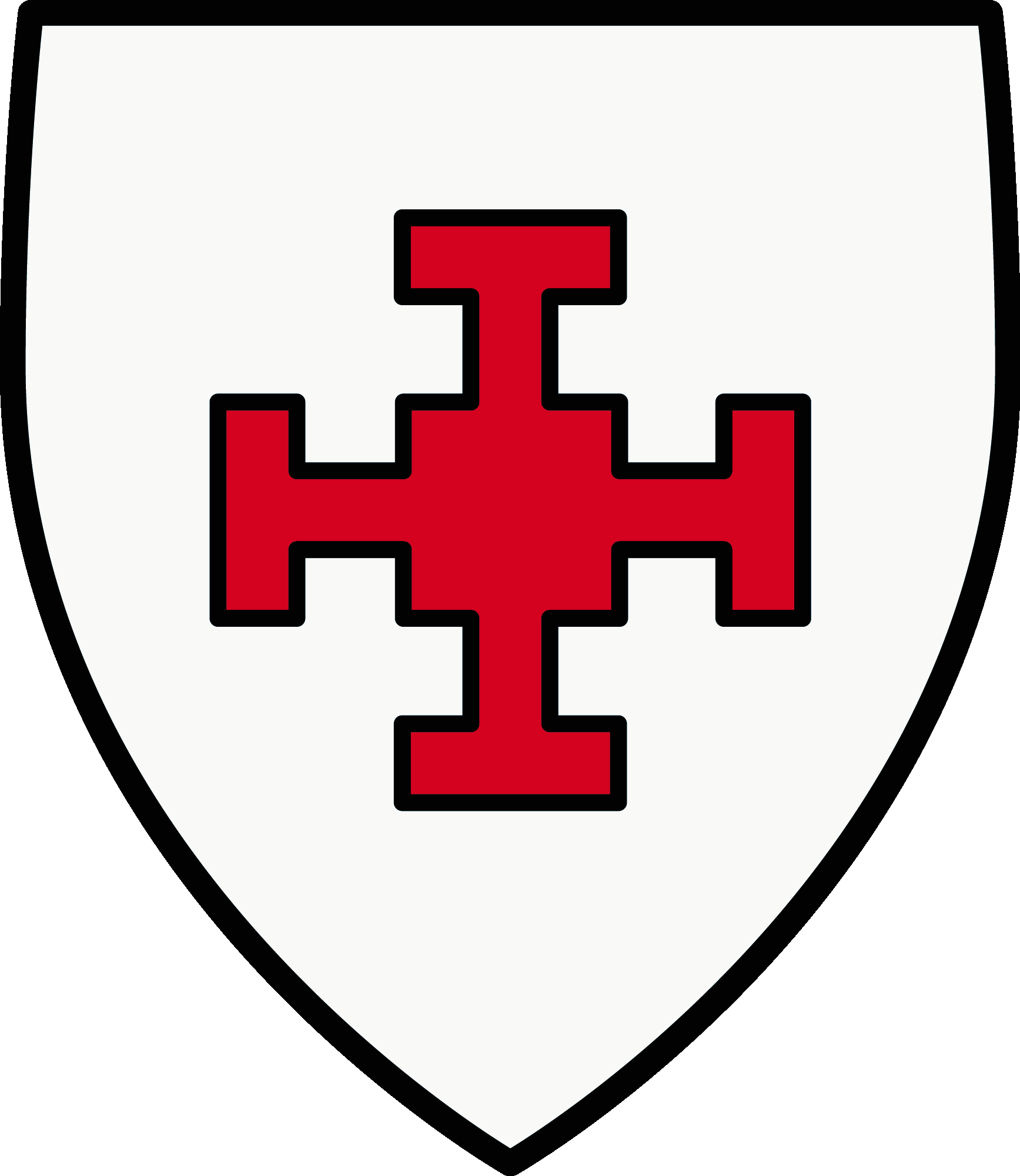
Meriden
"Meriden" recalls the fact that our school was first opened, in 1853, in Meriden Street, where it remained until 1881.
The building has long since disappeared, but buildings of the same period existed in the street until relatively recently. The decoration of the plasterwork above some windows suggested the design of Meriden's emblem. This is a white flower, with eight petals, on a red ground, representing the red brick background of the buildings.
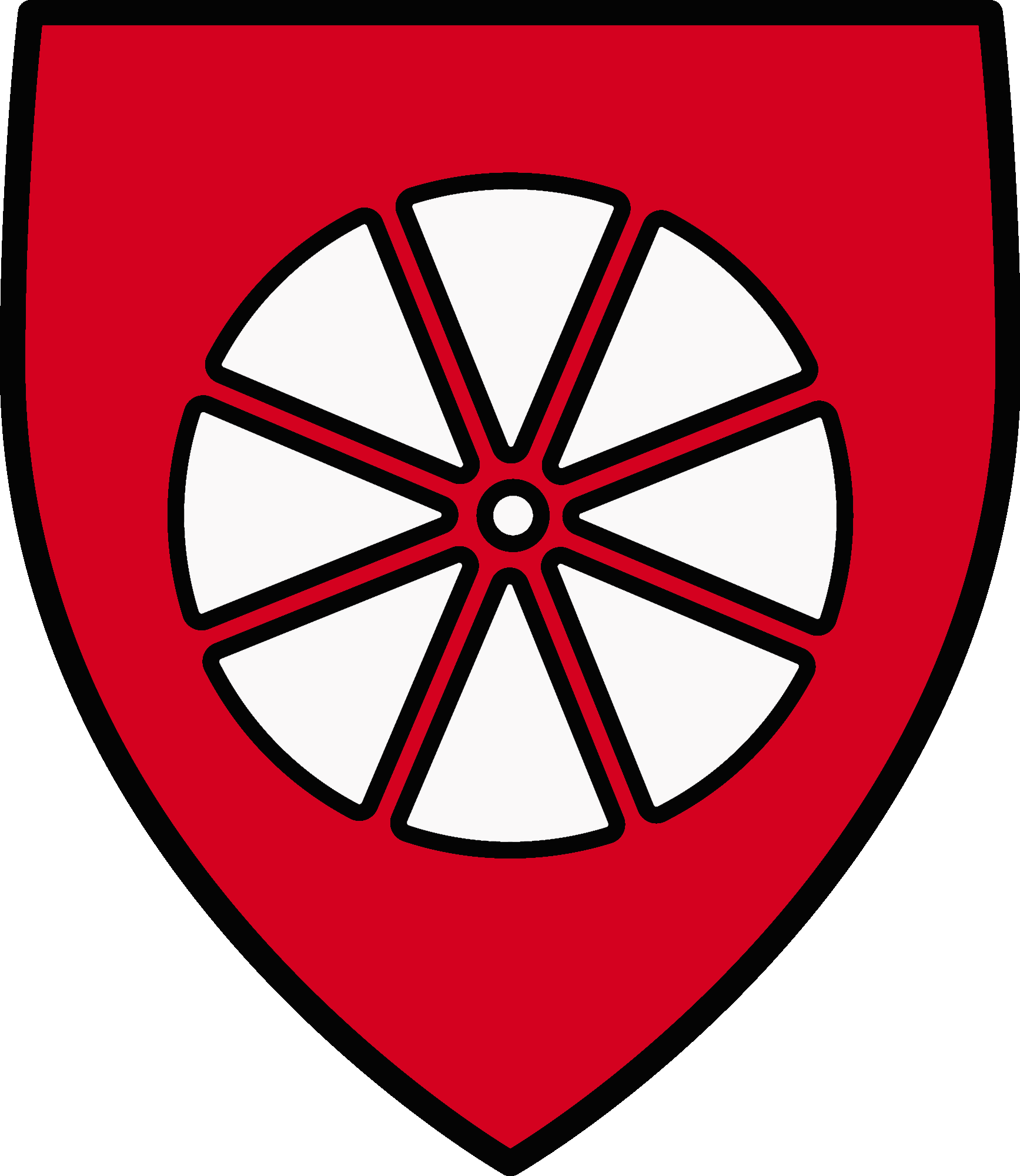
Priory
"Priory" is associated with our present site, to which the school moved in 1958. The site was formerly occupied by a large Victorian house, known as "The Priory".
Priory's emblem is a black moorhen on a pale yellow ground. This was suggested by the moorhens that sometimes nest on our pond and by the yellow irises growing round it.
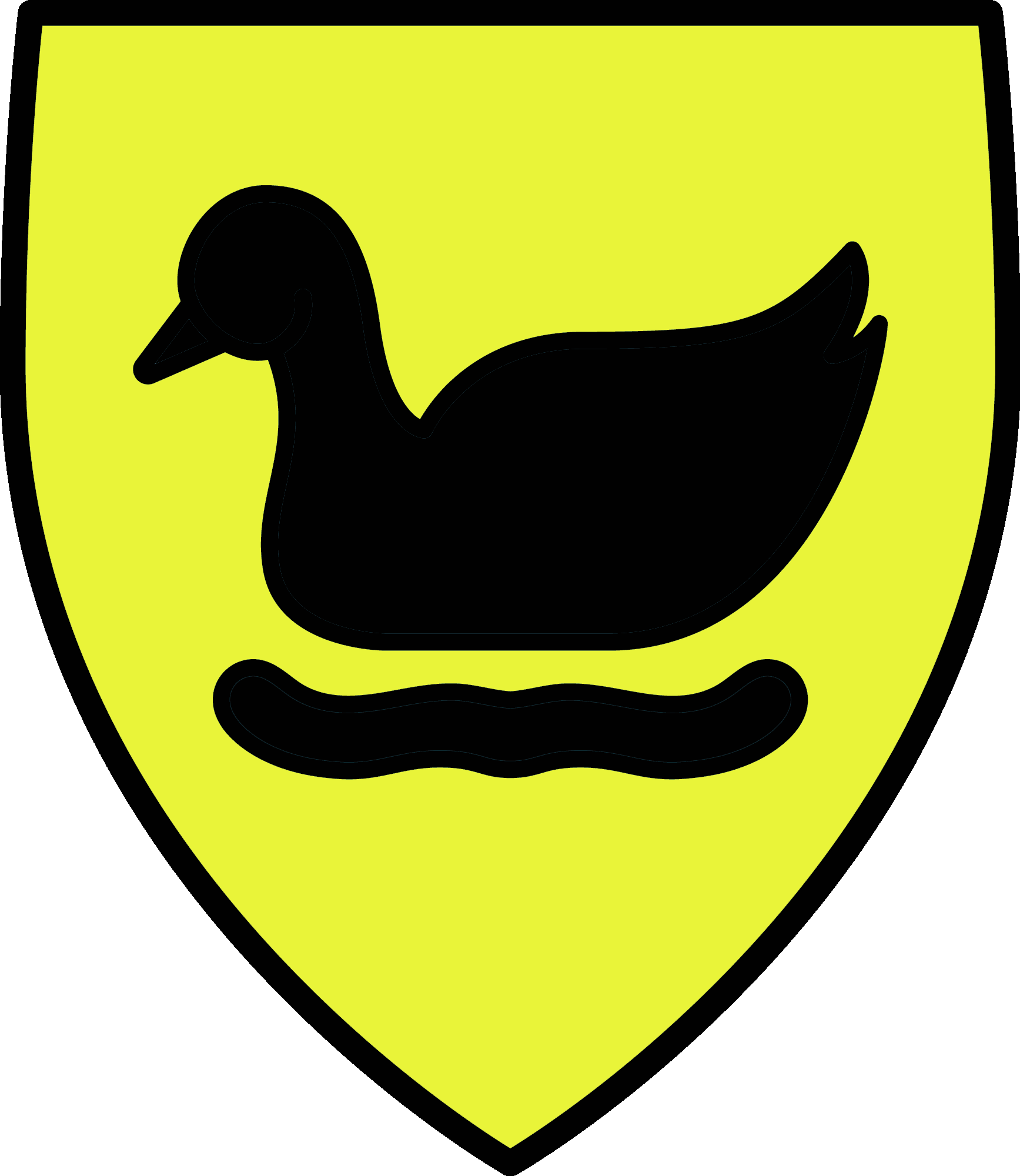
Stratford
"Stratford" commemorates the fact that our school occupied a site on Stratford Road, at Camp Hill, from 1881 until 1958.
The House emblem is a gold interlaced trefoil on a pale blue ground. The design is based on the shape of some small windows, just below the roof, on our old building on Stratford Road.
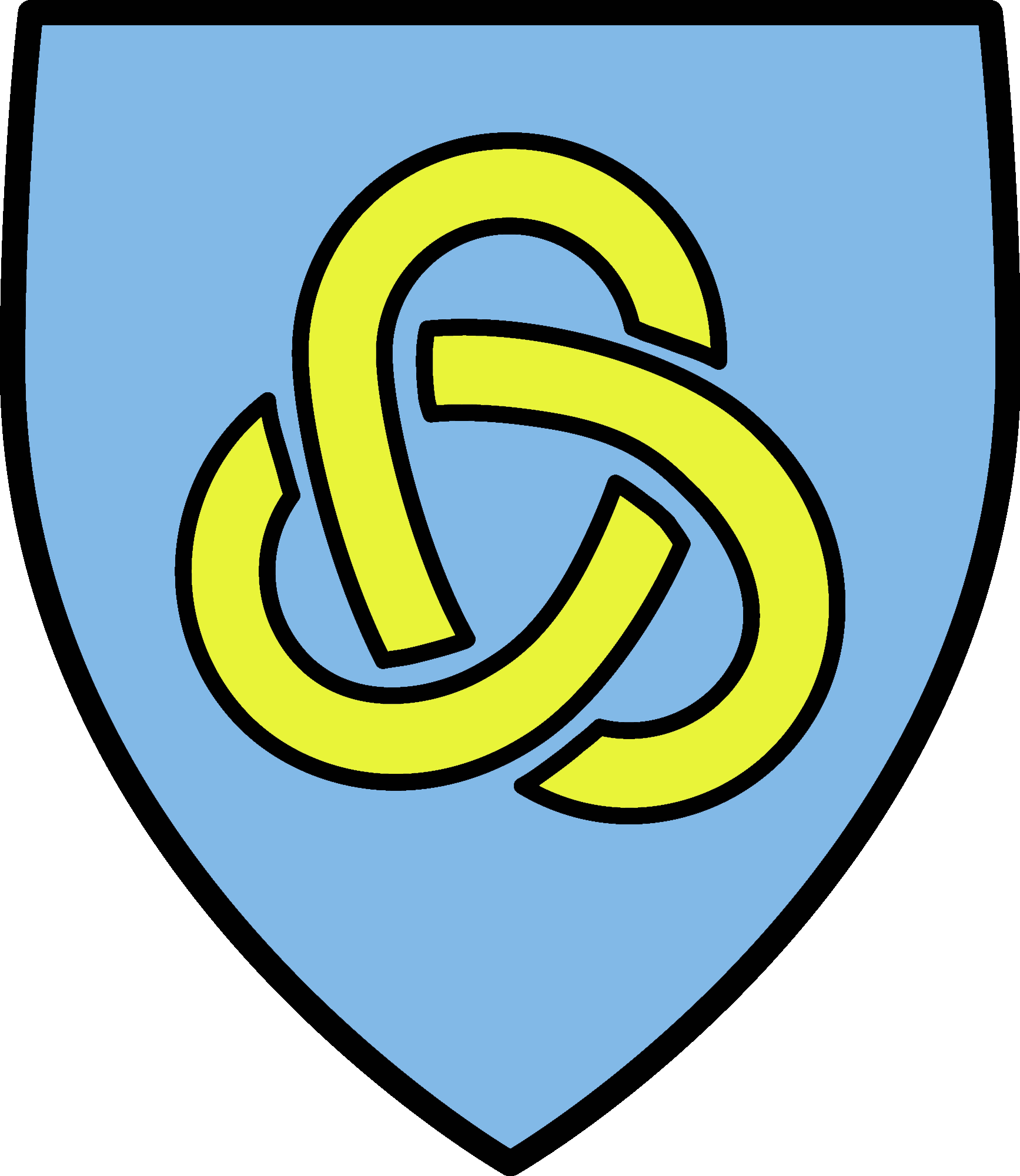
Warwick
"Warwick" is named because the school was evacuated to Warwick from 1939 until 1940.
Warwick's emblem is a white castle on a deep blue ground. It is not intended as a picture of Warwick Castle but is an heraldic symbol.
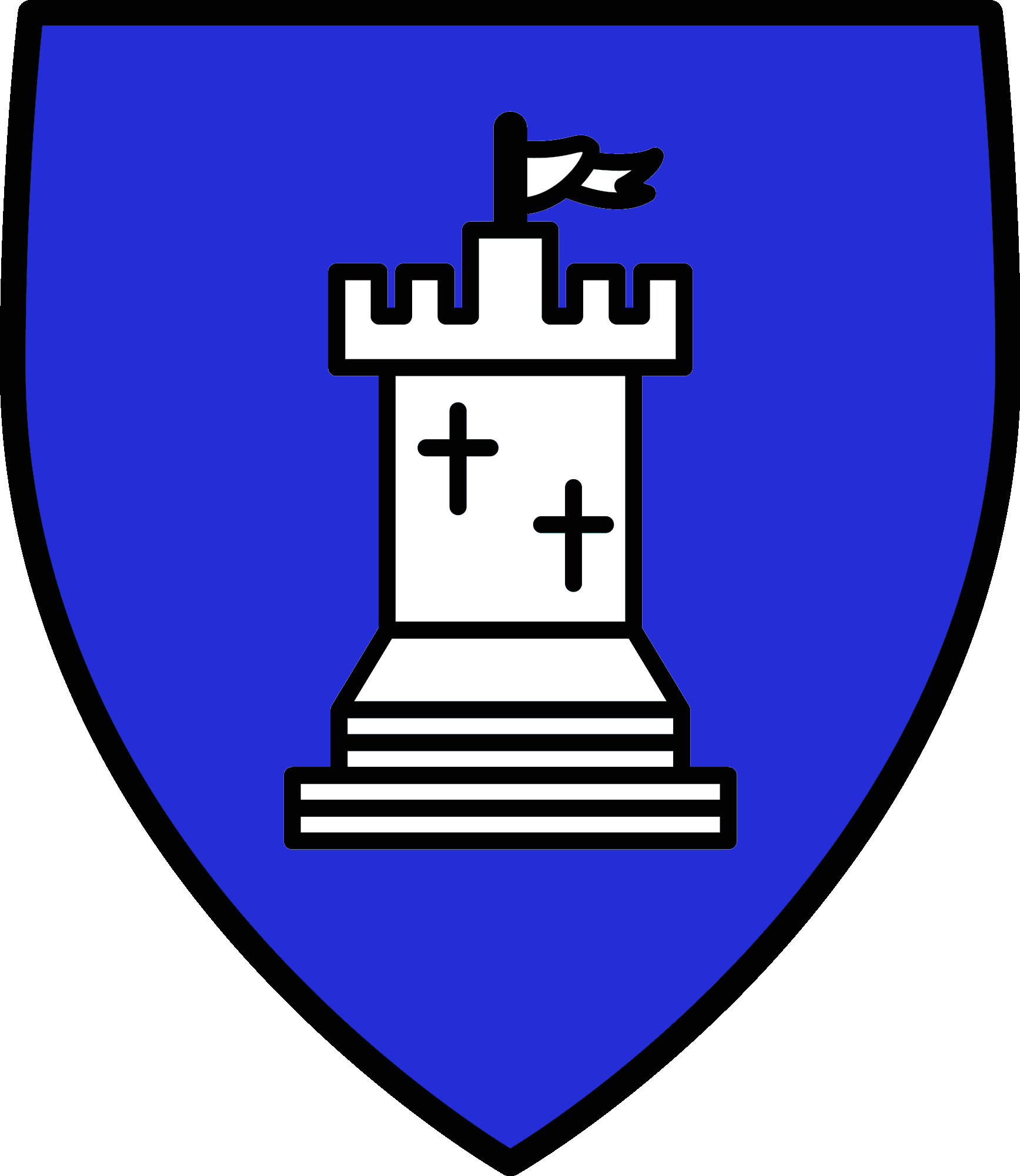
Some of the House trophies:
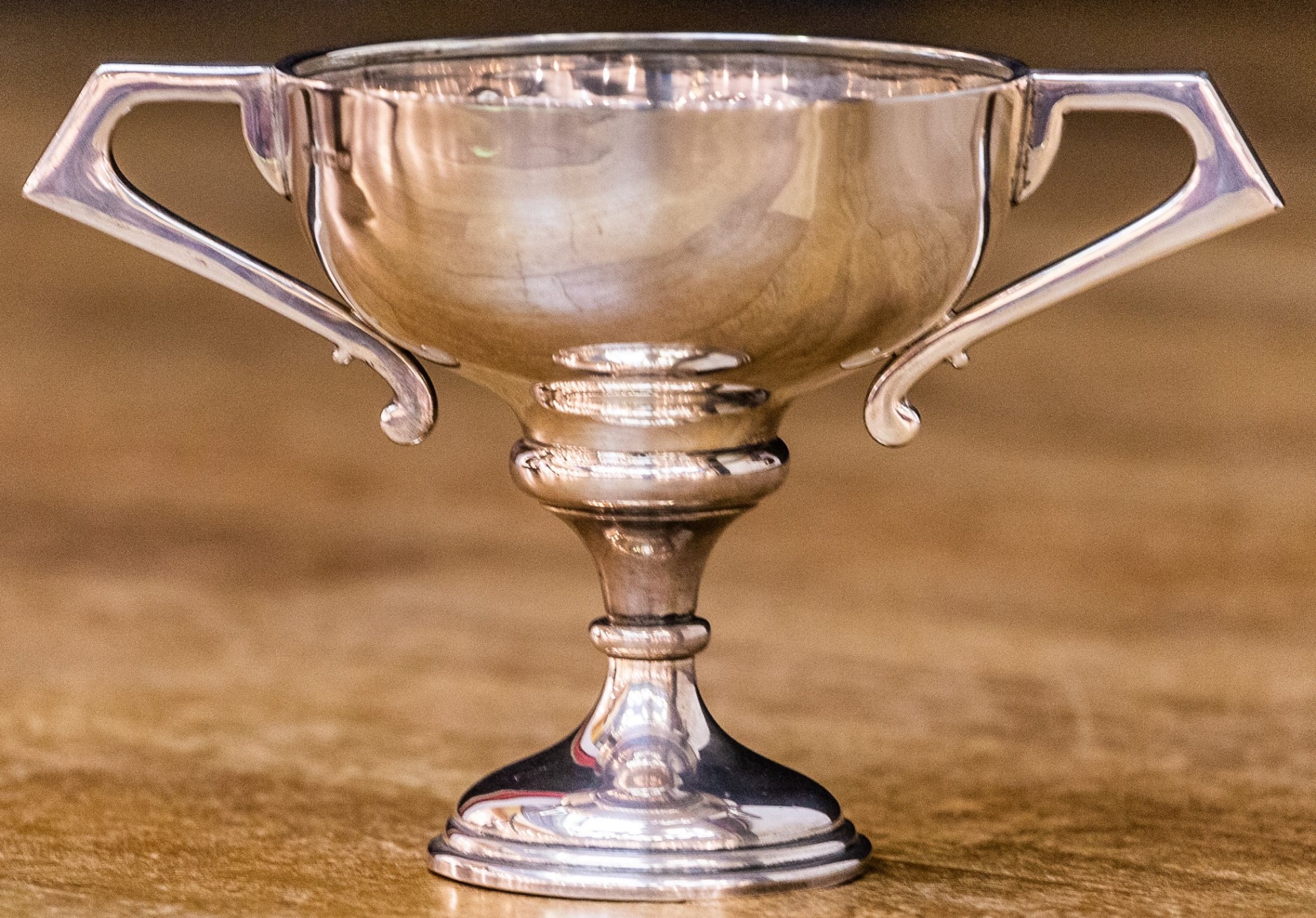
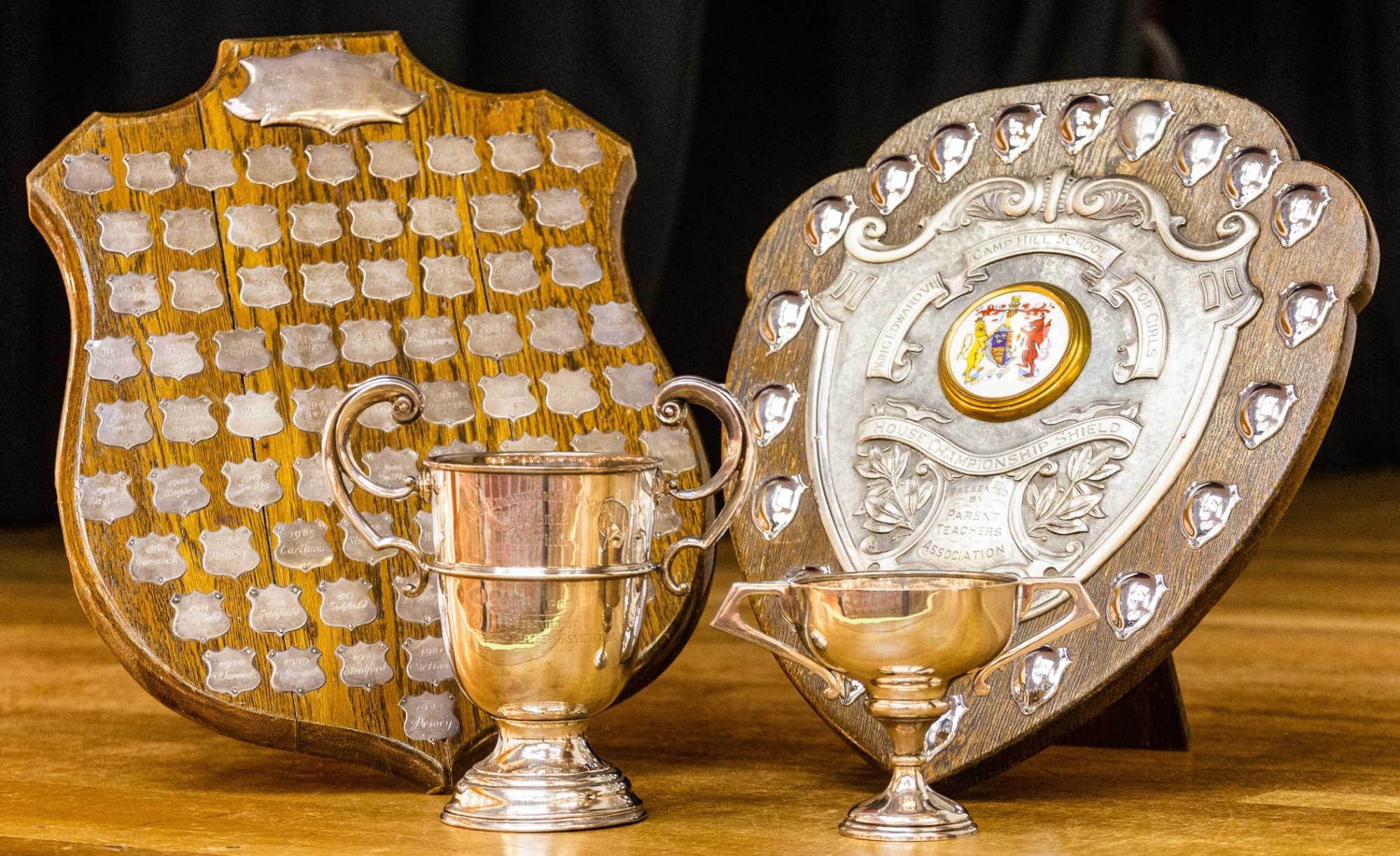
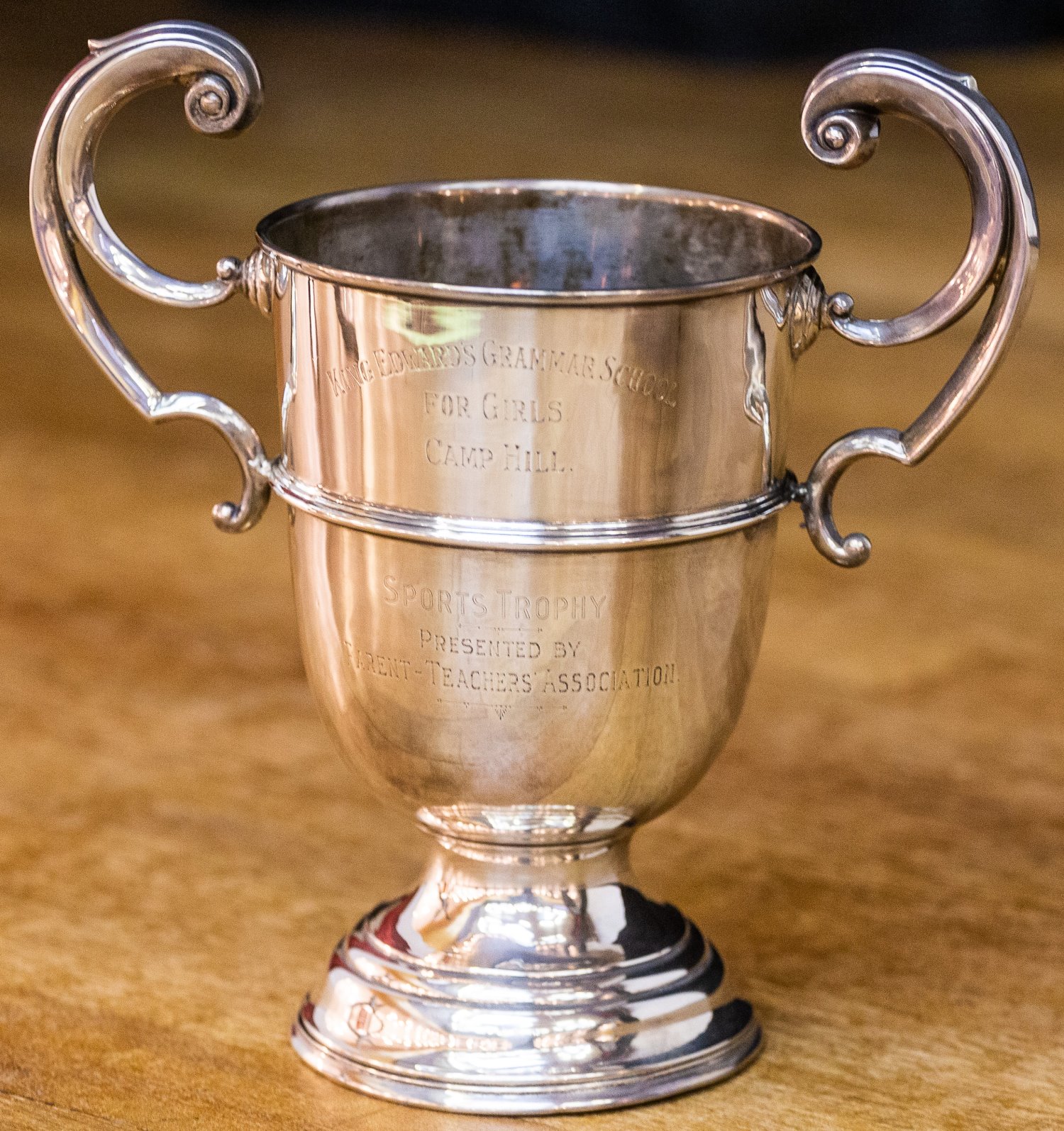
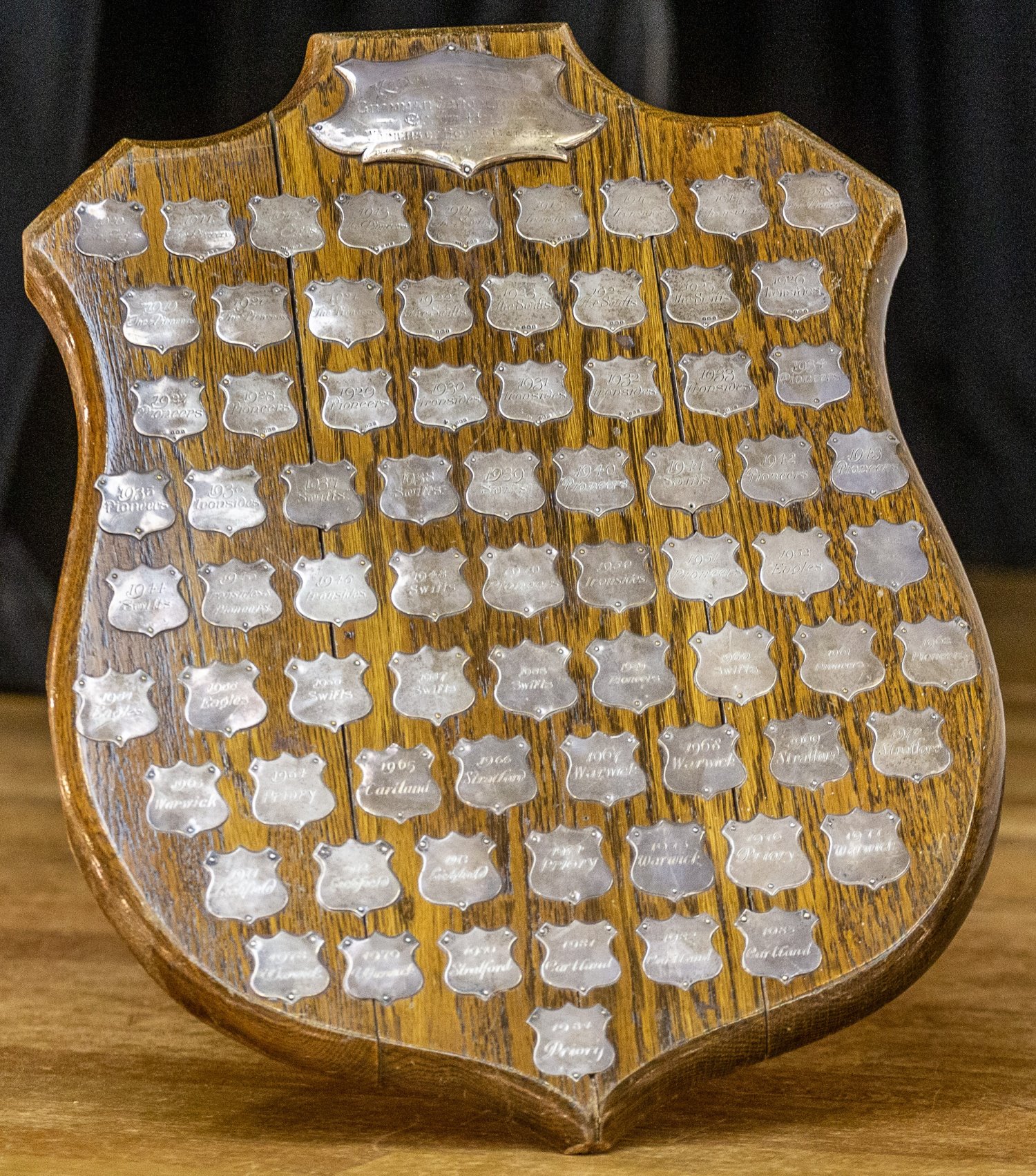
The History of Houses at Camp Hill
The House system was started at Camp Hill in 1913. Originally introduced as a horizontal system, with students allocated to Houses according to their age, it was soon realised that this was unsuitable for inter-house competitions and by 1923 it had been replaced with the vertical system that exists today.
The original House names were Eagles, Ironsides, Pioneers and Swifts. It was often remarked that the names had no connection with each other and no relevance to the history of the school. In 1929 there were discussions about changing the names, but it was decided against doing so.
It was not until 1962, when the unwieldy size of the Houses made House activities difficult to arrange, that the School Council decided to re-divide the school into six new Houses, with six new names, and the school was asked for suggestions for names. One small Junior, mesmerised, no doubt, by the number “six”, suggested the names of Henry VIII’s six wives. Following a period of debate and negotiation in School and Form Councils, with guidance from Miss McNaulty (the then Head of History), the current House names were decided upon. The description of each House, above, is taken from an article Miss McNaulty wrote in the school magazine.
House badges were instituted in 1935. Mr Jinks, a member of the school's domestic staff from the 1940s to 1960s, used to wear all six House badges to avoid appearing partisan!
